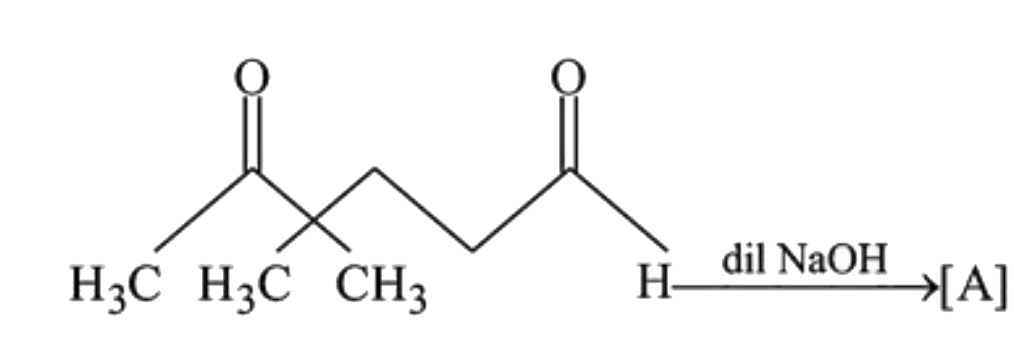X(Black)Dil.H2SO4−−−−−−→Y(gas)Dil.HNO3−−−−−−→ Colloidal sulphur identify X?
CuS
FeS
PbS
NiS
The correct Answer is:B
To identify the compound X in the given sequence of reactions, we can follow these steps:
Step 1: Analyze the properties of compound X
- The problem states that compound X is black in color. A common black compound in inorganic chemistry is ferrous sulfide (FeS).
Hint: Look for black-colored inorganic compounds that can react with dilute sulfuric acid.
Step 2: Reaction of X with dilute H2SO4
- When ferrous sulfide (FeS) reacts with dilute sulfuric acid (H2SO4), it produces hydrogen sulfide gas (H2S) and ferrous sulfate (FeSO4).
FeS+H2SO4→H2S+FeSO4
Hint: Remember that the reaction of sulfides with acids typically produces hydrogen sulfide gas.
Step 3: Identify gas Y
- The gas produced in this reaction is hydrogen sulfide (H2S), which is a colorless gas with a characteristic smell.
Hint: Identify the gas produced in the reaction of sulfides with acids.
Step 4: Reaction of gas Y with dilute HNO3
- The next step involves the reaction of hydrogen sulfide (H2S) with dilute nitric acid (HNO3). This reaction leads to the formation of colloidal sulfur (S), nitrogen dioxide (NO2), and water (H2O).
6H2S+6HNO3→3S+6NO2+6H2O
Hint: Consider the products formed when hydrogen sulfide reacts with nitric acid.
Step 5: Conclusion
- From the above reactions, we conclude that compound X is ferrous sulfide (FeS), and the gas Y produced is hydrogen sulfide (H2S). The final product is colloidal sulfur.
Final Answer: Compound X is ferrous sulfide (FeS).
- The problem states that compound X is black in color. A common black compound in inorganic chemistry is ferrous sulfide (FeS).
- When ferrous sulfide (FeS) reacts with dilute sulfuric acid (H2SO4), it produces hydrogen sulfide gas (H2S) and ferrous sulfate (FeSO4).
FeS+H2SO4→H2S+FeSO4
- The gas produced in this reaction is hydrogen sulfide (H2S), which is a colorless gas with a characteristic smell.
- The next step involves the reaction of hydrogen sulfide (H2S) with dilute nitric acid (HNO3). This reaction leads to the formation of colloidal sulfur (S), nitrogen dioxide (NO2), and water (H2O).
6H2S+6HNO3→3S+6NO2+6H2O
- From the above reactions, we conclude that compound X is ferrous sulfide (FeS), and the gas Y produced is hydrogen sulfide (H2S). The final product is colloidal sulfur.
Topper's Solved these Questions
- BOOK - VK JAISWAL ENGLISHCHAPTER - QUALITATIVE INORGANIC ANALYSISEXERCISE - LEVEL 362videos
QUALITATIVE INORGANIC ANALYSIS
- BOOK - VK JAISWAL ENGLISHCHAPTER - QUALITATIVE INORGANIC ANALYSISEXERCISE - ONE OR MORE ANSWER IS/ARE CORRECT43videos
QUALITATIVE INORGANIC ANALYSIS
- BOOK - VK JAISWAL ENGLISHCHAPTER - QUALITATIVE INORGANIC ANALYSISEXERCISE - SUBJECTIVE PROBLEMS4videos
QUALITATIVE INORGANIC ANALYSIS
- BOOK - VK JAISWAL ENGLISHCHAPTER - PERIODIC PROPERTIESEXERCISE - MATCH THE COLUMN11videos
PERIODIC PROPERTIES
- BOOK - VK JAISWAL ENGLISHCHAPTER - s-BLOCK ELEMENTSEXERCISE - SUBJECTIVE PROBLEMS2videos
s-BLOCK ELEMENTS
Similar Questions
Knowledge Check
- Question 1 - Select One
Consider the following reaction sequence ,
CH3CH(OH)CH3ConcH2SO4−−−−−−−−→HeatXdil.H2SO4−−−−−−−−→H2OY
X and Y in the reaction respectively areACH3CH=CH2,CH3CH(OH)CH3BCH3CH=CHCH3,CH3CH2CH2OHCCH3CH2CH=CH2,CH3,CH2CH2OHDCH3CH2CH2CH3,CH3CH(OH)CH2CH3
(T)imparts violet colour to flameCompound (U)+conc. H2SO4−−−−−−−−−−−−−−−−−→(V)Red gasNaOH+AgNO3−−−−−−−−−→(W)Red ppt.NH3 soln.−−−−−−→(X)
(W)dil. KCl−−−→(Y) white ppt
(U)NaoH−−−→Δ(Z) gas (gives white fumes with HCl)
Identify (T) to (Z).View Solution Hdil NaOH−−−−→[A]H2O+−−−→Δ[B]View Solution
Hdil NaOH−−−−→[A]H2O+−−−→Δ[B]View SolutionSelect the incorrect statement on basis of following conversion :-
XBlackcolouredOreKOH−−→airYDarkgreenH⊕−−→Zan oxidisingagent+XView SolutionAK2Cr2O7−−−−−−−→dil.H2SO4BCH3MgI−−−−−−−→H2OCH3−CH3∣C∣OH−CH3
The reactant A is :View SolutionH−C≡C−HHgSO4−−−−−−→H2SO4dil.NaOH−−−−−→Δ−−→P. The final product P is
View SolutionS+HNO3(Dil.)→H2SO4+No↑⏐
View SolutionHNO3/H2SO4−−−−−−−−→ANaOH−−−−−→433KB, B is
 View Solution
View Solution

